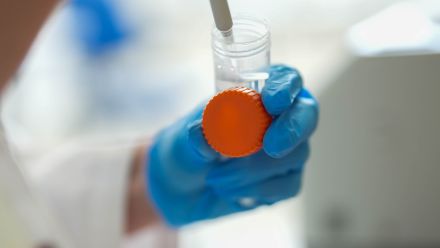Immune system protein may help defeat flesh-eating bacteria
A clever protein inside the immune system could be used as a "weapon" against a common bacteria that in extreme cases is responsible for causing deadly flesh-eatingdisease, scientists from The Australian National University (ANU)have found.
The protein helps detect and warn against the potentially lethal bacteria, Clostridium perfringens.
In its benign form, the Clostridium perfringensbacteria is a common cause of food poisoning. But in severe cases,it'sresponsible for causing deadly infections, including gangrene.
"We found thebacteria produces two toxins that act in different ways and attack the body using a two-pronged approach," Dr Anukriti Mathur, from the ANU John Curtin School of Medical Research (JCSMR), said.
"The first toxin punches holes into the cell surface, while the other enters the cell and damages the cell's internal structures."
The authors of the study describe NLRP3's ability to detectthese toxins using the analogy of a home security system "that also doubles up as a fire detector".
"Thisfire detector, like NLRP3, is very versatile and canprotect the house, or in this case, our body," co-author Callum Kay, also from JCSMR, said.
"But what if thisfire detector was so sensitive that it interpreted smoke coming from a barbecue as a fire? Then the alarm would be constantly going offand cause chaos for the homeowner.
"We found that NLRP3 acts in a similar way; the protein can become overactive and trigger a disproportionate response that causes more harm than good and can lead to sepsis, which can be life-threatening."
By activating a defensive response, the ANU team also discovered a previously unidentified role of the NLRP3 protein to become "over-activated" and improperly respond to Clostridium perfringensinfection. When this happens, the body's safety mechanisms that are designed to protect us fail, leading to potentially deadly conditions such as sepsis.
The ANU scientists used drugs to dampen the immune system's defensive response triggered by NLRP3. This helped them decipher the molecular mechanisms that cause thetoxins to trigger the protein's alarm system.
According to the researchers, by better understanding these mechanisms scientists can begin to uncover ways to develop new therapies to defeat the bacteria, for which current treatment options are limited and not very effective.
"The death rate of muscle necrosis, which is caused byClostridium perfringens, remainsalarmingly high,exceeding 50 per cent," Dr Mathur said.
"By understanding the role NLRP3 plays in detecting these deadly toxins and the defensive mechanisms it activates to protect the body, we can start to develop new techniques that target the protein and 'dampen' its overactive response.
"This would not only help prevent the body from triggering extreme and potentially deadly reactions to infection, but it could also help us find new ways to outsmart the bacteria and potentially develop new treatments."
The research is published in EMBO Reports.


